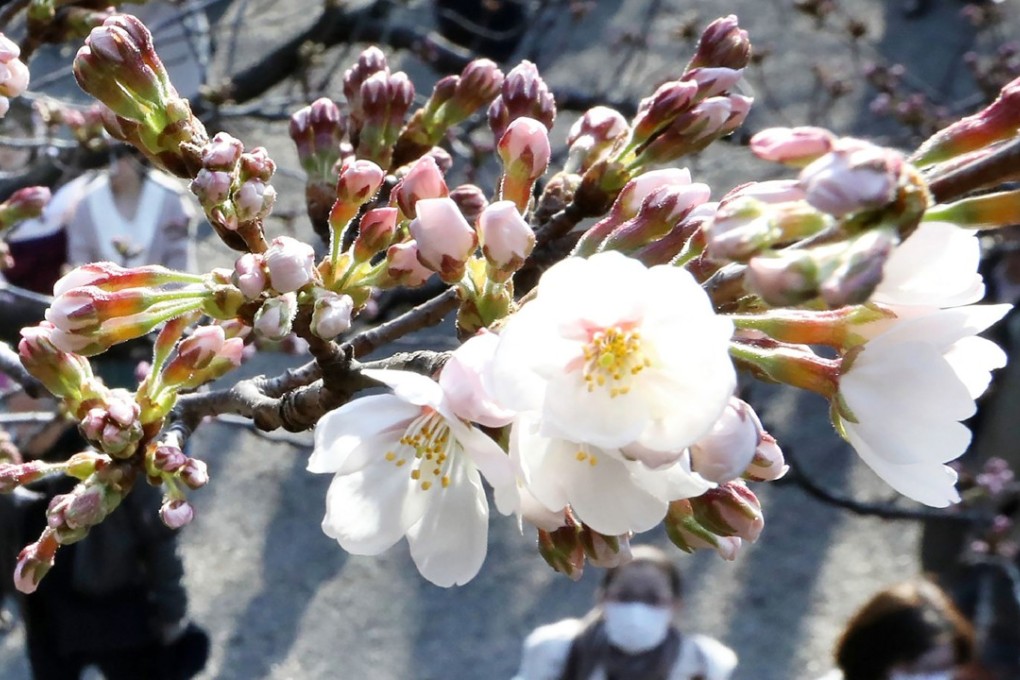Japanese cherry blossom season is here but trees could be wiped out by foreign species of beetle
Local authorities admit to having been caught off guard by the invasion and have been forced to cut down trees as no effective pesticide exists to exterminate the beetles

After a long and cold winter, the much anticipated announcement that cherry blossom season has finally arrived in eastern Japan has been greeted with enthusiasm. That excitement has been curbed, however, by the warning an invasion by a foreign species of beetle from mainland Asia could decimate the nation’s cherry trees in just a few years.
Few things are as quintessentially Japanese as cherry blossoms – the delicate pink flowers rank alongside the profile of Mount Fuji and geisha as motifs of the nation – and the progress of the opening of the buds is followed with near-religious zeal each spring.
The Japan Meteorological Agency announced shortly after noon on Saturday that six flowers had bloomed on a specific somei-yoshino cherry tree in the grounds of a Yasukuni Shrine, nine days earlier than usual.
Unless something is done, it would not surprise me if someday Japan’s cherry trees were wiped out
There was additional good news for lovers of the cherry blossom season when a botanist in Wakayama Prefecture, central Japan, announced he had identified a new species of cherry tree on the Kii Peninsula. If confirmed, the new species of early-blooming trees will be the first to be discovered in Japan in a century.
Yet the good news has been tempered by some extremely bad news for cherry trees.
Koichi Goka, an entomologist who works for Japan’s National Environmental Research Laboratory, has told the Yukan Fuji news magazine that native cherry trees are at risk due to an invasion of aromia bungii, better known as the red-necked longhorn beetle.
“Unless something is done, it would not surprise me if someday Japan’s cherry trees were wiped out,” Goka said.